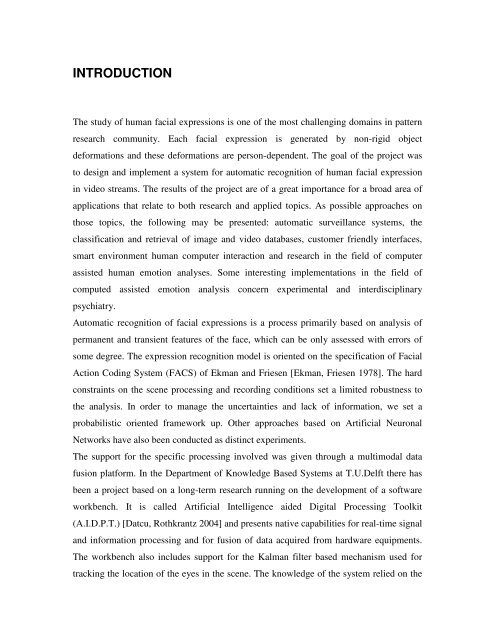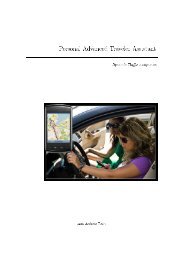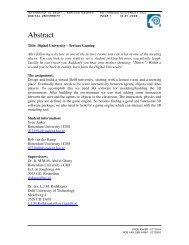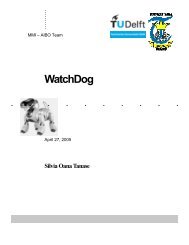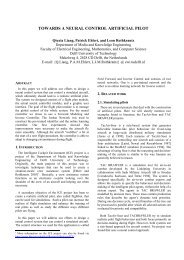Recognition of facial expressions - Knowledge Based Systems ...
Recognition of facial expressions - Knowledge Based Systems ...
Recognition of facial expressions - Knowledge Based Systems ...
Create successful ePaper yourself
Turn your PDF publications into a flip-book with our unique Google optimized e-Paper software.
INTRODUCTION<br />
The study <strong>of</strong> human <strong>facial</strong> <strong>expressions</strong> is one <strong>of</strong> the most challenging domains in pattern<br />
research community. Each <strong>facial</strong> expression is generated by non-rigid object<br />
deformations and these deformations are person-dependent. The goal <strong>of</strong> the project was<br />
to design and implement a system for automatic recognition <strong>of</strong> human <strong>facial</strong> expression<br />
in video streams. The results <strong>of</strong> the project are <strong>of</strong> a great importance for a broad area <strong>of</strong><br />
applications that relate to both research and applied topics. As possible approaches on<br />
those topics, the following may be presented: automatic surveillance systems, the<br />
classification and retrieval <strong>of</strong> image and video databases, customer friendly interfaces,<br />
smart environment human computer interaction and research in the field <strong>of</strong> computer<br />
assisted human emotion analyses. Some interesting implementations in the field <strong>of</strong><br />
computed assisted emotion analysis concern experimental and interdisciplinary<br />
psychiatry.<br />
Automatic recognition <strong>of</strong> <strong>facial</strong> <strong>expressions</strong> is a process primarily based on analysis <strong>of</strong><br />
permanent and transient features <strong>of</strong> the face, which can be only assessed with errors <strong>of</strong><br />
some degree. The expression recognition model is oriented on the specification <strong>of</strong> Facial<br />
Action Coding System (FACS) <strong>of</strong> Ekman and Friesen [Ekman, Friesen 1978]. The hard<br />
constraints on the scene processing and recording conditions set a limited robustness to<br />
the analysis. In order to manage the uncertainties and lack <strong>of</strong> information, we set a<br />
probabilistic oriented framework up. Other approaches based on Artificial Neuronal<br />
Networks have also been conducted as distinct experiments.<br />
The support for the specific processing involved was given through a multimodal data<br />
fusion platform. In the Department <strong>of</strong> <strong>Knowledge</strong> <strong>Based</strong> <strong>Systems</strong> at T.U.Delft there has<br />
been a project based on a long-term research running on the development <strong>of</strong> a s<strong>of</strong>tware<br />
workbench. It is called Artificial Intelligence aided Digital Processing Toolkit<br />
(A.I.D.P.T.) [Datcu, Rothkrantz 2004] and presents native capabilities for real-time signal<br />
and information processing and for fusion <strong>of</strong> data acquired from hardware equipments.<br />
The workbench also includes support for the Kalman filter based mechanism used for<br />
tracking the location <strong>of</strong> the eyes in the scene. The knowledge <strong>of</strong> the system relied on the


